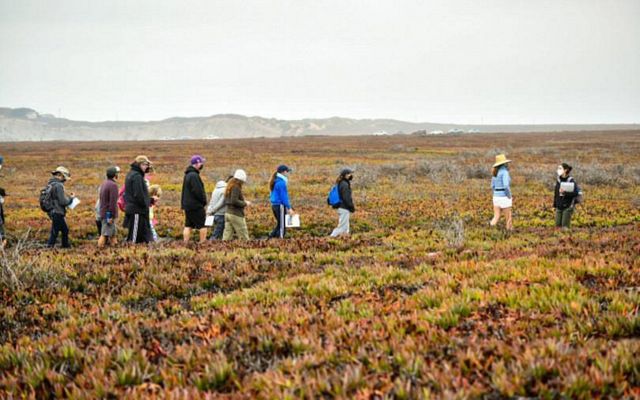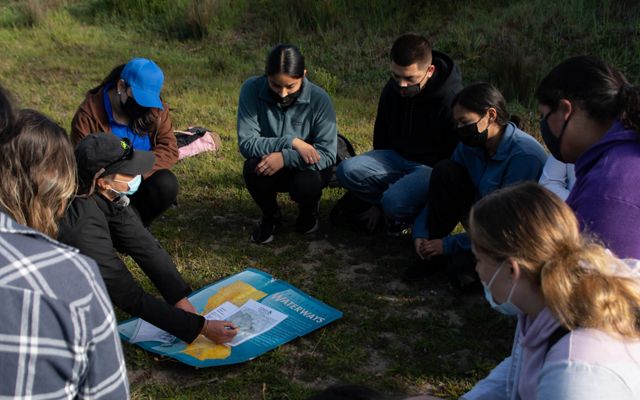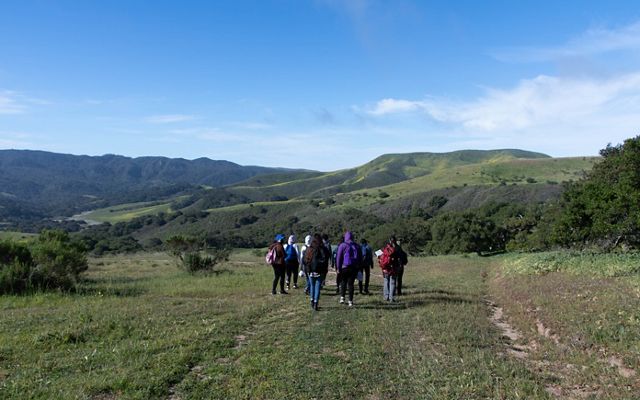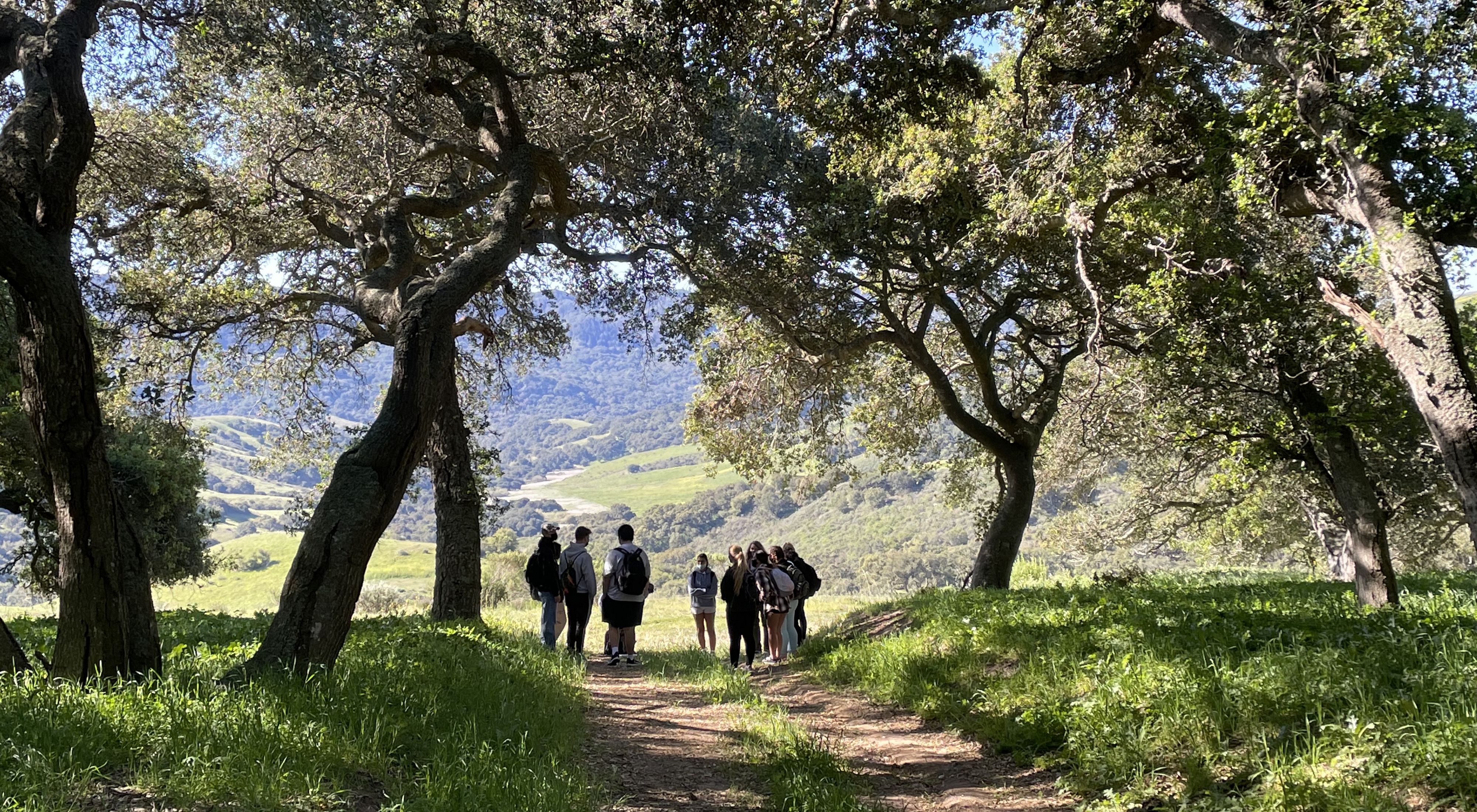Media Contacts
-
Heather Gately
Media Contact
The Nature Conservancy
Phone: 773-474-4500
Email: heather.gately@tnc.org
Students depart from the Cojo Gate towards Army Camp on the Jack and Laura Dangermond Preserve. Overhead, a single osprey soars above the group, watching these new visitors in a place that has been largely unimpaired by people, save for centuries of cattle ranching. As the students traverse the Preserve, the landscape quickly shifts from chaparral to coastal shrubs and groves of weathered oak. Their world-class NatureBridge educator draws their attention to the sounds in the distance of the Pacific Ocean as waves crash on the sprawling cliffs. Sandy beaches that await these students with the promise of playful seals swimming along the kelp-lined shore. As the group continues on to Army Camp, they come to realize the wonder of the natural world in their own backyard.

Referred to as “the last perfect place in California”, the Dangermond Preserve is one of the last remaining stretches of wild coast in California. The sprawling 24,000-acre preserve is located at Point Conception in Santa Barbara, CA and it is a living laboratory that facilitates scientific research and environmental education. The Nature Conservancy acquired the preserve thanks to the single largest gift in our history, from Jack and Laura Dangermond. Beyond protecting this amazing place, our mission at the preserve is to teach young people about its importance to the California ecosystem, which is why we enlisted NatureBridge, the National Park Service’s largest educational partner, to provide the gold standard of environmental science programming for students visiting the Preserve.

In the Spring 2022, NatureBridge and The Nature Conservancy partnered to develop a program to bring students from the nearby Lompoc Unified School District to the Dangermond Preserve. Over 180 students from the area participated accompanied by educators from NatureBridge. NatureBridge’s mission is to connect young people to the wonder and science of the natural world, and with the resources at the preserve that mission is being accomplished.
Quote: Ty
I think about how much biodiversity is around the areas I live in. After visiting the Preserve I really recognized how many living things can thrive in small areas and how much humans can have an impact on these tiny ecosystems.
As part of the NatureBridge and TNC curriculum, students were introduced to the unique natural qualities of the Preserve including the convergence of four eco-regions and seven habitats uninterrupted from mountain to coast. This allows students to not only learn about the environment and their impact on it, but also about themselves.
Quote: Galilea
I am still thinking about how we need time to take a break from the world and how important it is to take in nature and the moment.

The Dangermond Preserve also offers a critical opportunity for scientists and students to study an untouched ecosystem that is adapting to climate change without human influence. Species indigenous to Northern and Southern California converge on this stretch of the coast, creating the unique opportunity to study how climate change is altering the home range of aquatic and terrestrial organisms. The Nature Conservancy and NatureBridge plan to increase the program from 180 students to 750+ in 2022-2023 to eventually ensure that there is at least one preserve engagement opportunity for every student of the Lompoc School District.
Quote: Mark Reynolds
We’re trying to make this the next conservation space. None of this is doable without the next generation of environmental leaders, without greater knowledge about what’s happening and science.

The importance of the partnership between our organizations cannot be overstated. With the need for more environmental education, connected STEM and stewardship programming—especially for communities that do not traditionally have access to it—we have an opportunity to build a model at the Dangermond Preserve that can be applied to natural spaces throughout the country. We invite you to learn more about the partnership between The Nature Conservancy and NatureBridge on our website.
The Nature Conservancy is a global conservation organization dedicated to conserving the lands and waters on which all life depends. Guided by science, we create innovative, on-the-ground solutions to our world’s toughest challenges so that nature and people can thrive together. We are tackling climate change, conserving lands, waters and oceans at an unprecedented scale, providing food and water sustainably and helping make cities more sustainable. The Nature Conservancy is working to make a lasting difference around the world in 81 countries and territories (40 by direct conservation impact and 41 through partners) through a collaborative approach that engages local communities, governments, the private sector, and other partners. To learn more, visit nature.org or follow @nature_press on X.
